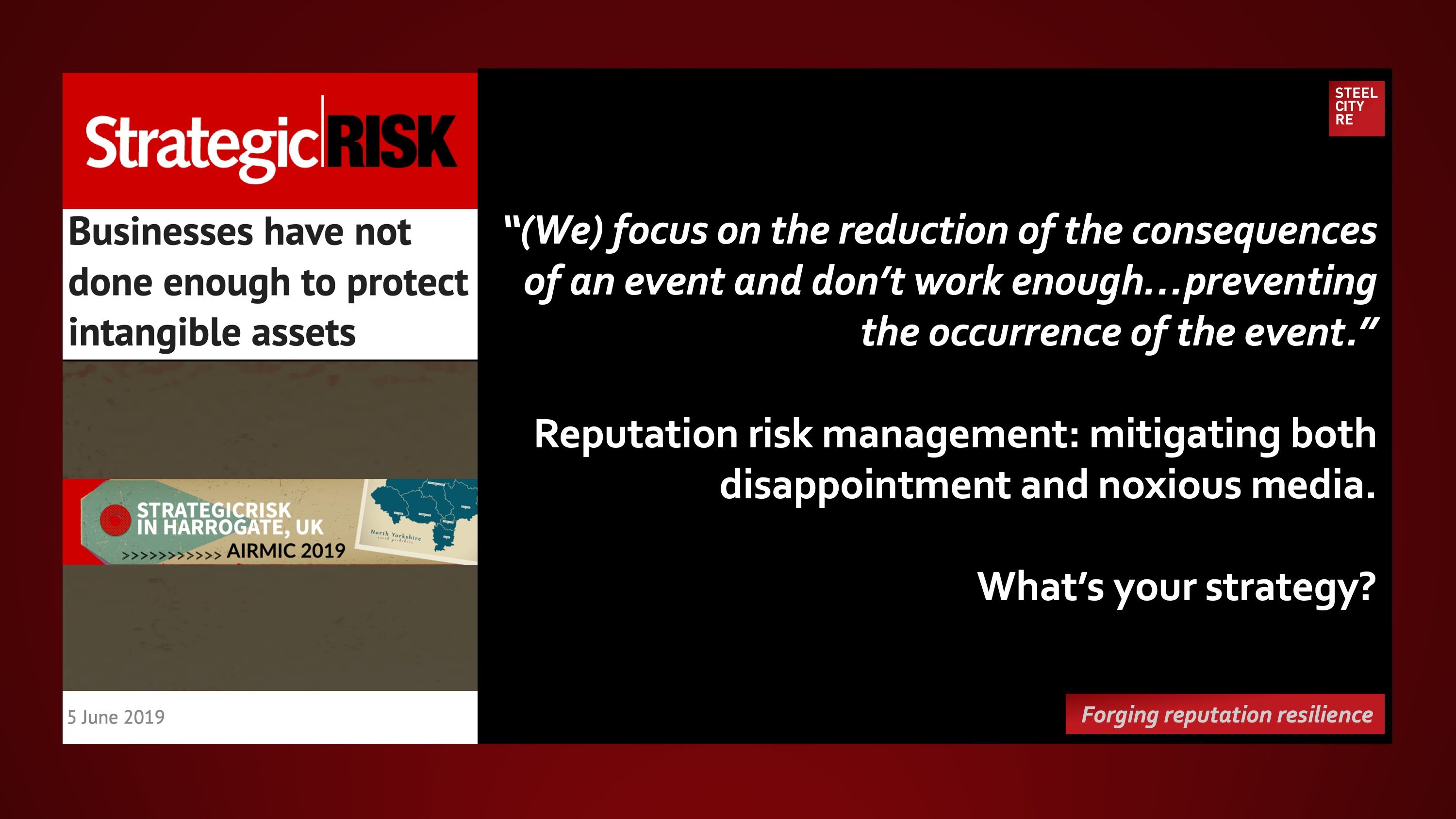“‘When you look at our business today, it’s driven by innovation,’ (Aon Risk Services’ Michelle Mason) said, adding: ‘If businesses don’t innovate, they die….Yet our governance structures, particularly risk management, is still heavily focused on tangible assets,” she said. When you look at the S&P 500, more than 85% of its value is in intangible assets,” she said but the managing director noted that insurance spend on the minority of tangible.”
Strategic Risk
June 7, 2019
“(We) focus on the reduction of the consequences of an event and don’t work enough…preventing the occurrence of the event.”
Reputation risk management: mitigating both disappointment and noxious media.
For a broader view of reputation risk, discover additional articles by Steel City Re here, mentions of Steel City Re here, and comments on newsworthy topics by Steel City Re here. To read an abstracted summary of reputation risk, see below.
Reputations are valuable strategic intangible assets. Threats to these assets⏤ enterprise reputation risks, often mislabeled “brand risks” ⏤ need to be managed, and management needs to be overseen through reputation risk governance lest reputational damage or reputational harm result in long-tailed go-forward losses in economic value and/or political power. Because these intangible risks arise from the interplay of stakeholder expectation, experiences, and media amplification, parametric insurances for intangible asset risks, for reputational value, for reputational harm, and for reputation assurance help mitigate risk by telling a simple, convincing and completely credible story of quality reputation governance to stakeholders. This story telling effect is the expressive power of insurance complementing insurance’s better known instrumental power of indemnification.
Risk management, risk financing in insurance captives, and risk transfer through reputation insurances comprise the constituent elements of a comprehensive solution.
What’s your strategy?

